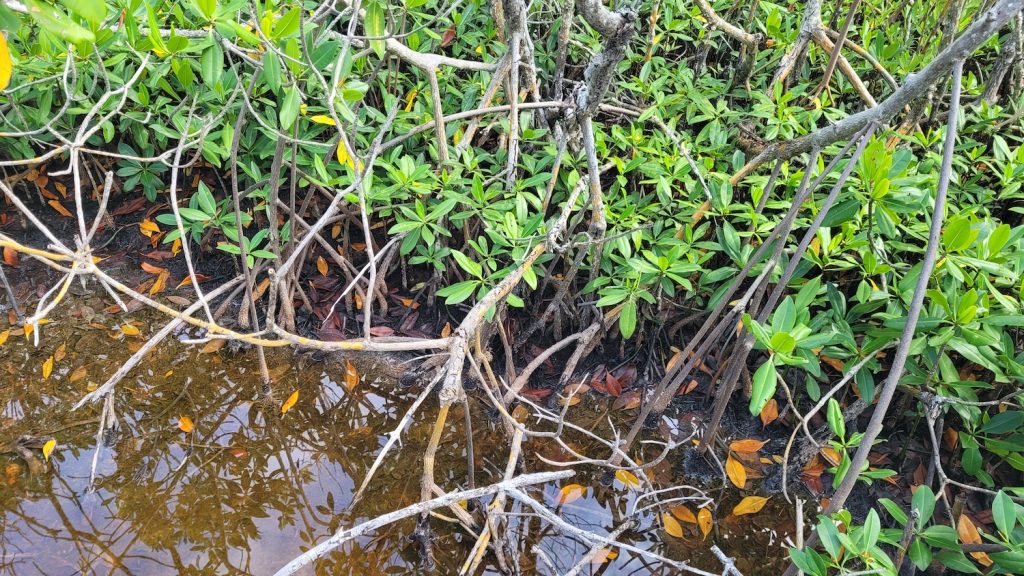Do you know what a wetland is? Surely you have visited one and have not noticed. You may just remember a bad rotting smell, maybe a bunch of mosquitoes biting you, or maybe you just did not experience any of this and enjoyed the wetland without realizing you were in one. What all these spaces have in common is that they are incredibly important for the environment and for us.
The United States Army Corps of Engineers defines wetlands as transitional areas between aquatic and terrestrial ecosystems that are frequently flooded or saturated by surface or groundwater for a sufficient period of time for it to produce changes in the soil that enable them to grow a type of vegetation especially adapted to live in these conditions.
This vegetation is known as hydrophytic plants, which have adaptations that allow them to survive in places that are flooded, swampy or that have little or no oxygen concentration.
In Puerto Rico there are different types of wetlands, some are associated to saltwater areas and others to freshwater areas. They are usually related to plains and coasts, although we can also find them in high mountains areas.
Among the best-known wetlands, we can mention the mangrove forest, Pterocarpus Forest, and Cayur Forest.
The mangrove forest is a saltwater wetland and is found in the coastal areas of the island. You have surely seen them when you visit some beaches or keys. There are four species of mangroves in Puerto Rico: the red mangrove, black mangrove, white mangrove, and button mangrove or buttonwood. The latter grows in dry areas bordering the forest, while the other three species are adapted to stand saltwater and unstable soil.
To be able to attach to unstable and flooded soil, the red mangrove adapted its roots to look like vines or stilts that go from the top branches to the ground. In addition, they filter the water, allowing little or no salt from reaching the tree. A place you can visit to see these trees is on the boardwalk at the Cabezas de San Juan Nature Reserve in Fajardo.

On the other hand, the Pterocarpus Forest is a freshwater wetland. There abounds the Pterocarpus tree, also known as chicken stick because of the shape of its roots that resemble chicken feet. This is part of the adaptation of these trees in order to stay erect in a soil that is constantly flooded. An interesting fact is that this tree has wingshaped seeds that allow them to float on water.
If you want to discover this beautiful forest you can visit the Pterocarpus Forest in Palmas del Mar in Humacao. This place is a Para la Naturaleza conservation easement; in it you will find a boardwalk that will take you through a tour of the forest.
Another wetland that you have surely heard of is the Cayur Forest, where the Cayur tree abounds. This tree, like the previous ones, has adapted to be able to grow in places with unstable soils flooded by fresh water. In Puerto Rico, we can find this wetland at Punta Tuna Natural Reserve in Maunabo, managed by the Department of Natural and Environmental Resources.
Many of these forests have decreased due to ignorance and destruction of the ecosystems for the development of structures and houses, affecting the habitat of several native and endemic species of our island’s flora and fauna.
Why should we protect wetlands? What is its importance?
Wetlands function as sediment filters and absorb pollutants that can be washed away by runoff caused by rainfall before it reaches the shores. For this reason, they help reduce flooding and control soil erosion.
These forests are important for refilling aquifers and many of them are important fish farms for local fisheries. Likewise, several animal species such as birds, fish, crustaceans, mollusks, insects, and other marine and aquatic animals inhabit them.
On the other hand, wetlands contribute to the economic development of communities, as they have recreational and educational uses. However, the irresponsible use of these spaces affects their integrity, so we must be aware of their importance from an ecological and social standpoint.

